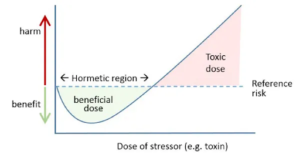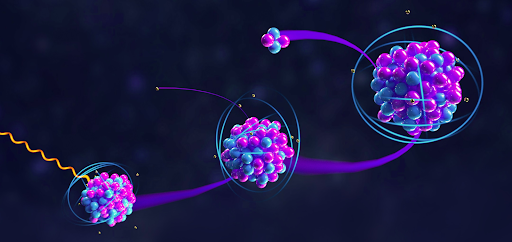“Hormesis is a term used by toxicologists to refer to a response to an environmental agent characterised by a low dose beneficial effect and a high dose toxic effect.”
– Mark P. Mattson, NCBI
The definition above will be the basis for this article. Hormesis is an emerging phenomenon that was first officially reported by 2 scientists in 1943 after they noticed that extracts from a red cedar tree (which is mildly poisonous to humans) sped up the metabolism of fungi at low concentrations. The idea then went stale for a couple decades before being revived by Edward Calabrese. There are many examples of hormesis helping organisms and their resistance to disease. But how does radiation come into the scene? How can the go-to weapon of any sci-fi villain be used to do the opposite of its function? Read on to find out.
What is Radiation Hormesis?
What happens when a person suffers from acute radiation syndrome? An agonising death that starts with nausea and ends in the destruction of everything inside you. But, as with everything, it depends on the dosage. Perhaps one of the most intensely studied victims of radiation were the people that suffered the devastating effects of the nuclear bomb attacking Hiroshima and Nagashi in 1945. The people studied developed leukaemia in less than 3 years of initial exposure to radiation, and other forms of cancer half a decade in. This is related to another graph which proves that an increased dose results in a higher risk of cancer.
This graph is subconsciously rooted into everyone that has existed past the invention of the nuclear bomb. We are raised to fear radiation, that it is the harbinger of a post-apocalyptic life where people scamper around in sewers or underground caves eating rats and waiting for the end of a nuclear winter. However, there is a massive red flag in this graph. Any dose of radiation lower than the point where it’s considered to be epidemiological is uncharted, and we’re left with only the line of best fit to make up our minds. Radiation hormesis questions the validity of that grey area. Scientists have found that a very low dose can actually be beneficial. This is done by your body “overreacting” to the threat. ‘Wait’ you may ask, ‘Isn’t that the effects of an allergic response?’ Yes. It is. But, at the same time, there is a key difference. Allergic reactions are against things that are not harmful to you, and hormesis is. Hormesis utilises low doses of radiation to prepare you for the worst. What’s not to love?

What are its benefits?
The effect of small traces of radiation on plant seeds showed an increase of yield and resilience to disease in soy, wheat and flax. There have been intensive studies conducted by Chinese scholars on the effect of Low Dose Radiation on Type 2 diabetic mice, and the results are quite astonishing. Type 2 diabetes can cause problems with various organs, and this includes the kidneys. Mice that were exposed to levels of radiation between 25-75mGy of X-rays were found to suppress renal inflammation and stop renal dysfunction. For context, 1Gy = 1Sv, though “Grays” refers to the actual dose while “Sieverts” are the amount absorbed by biological organisms. This means that the dose that the mice were given were equal to 5 chest CT scans, or the amount you’d gain by living in Canada for 10 years. The mice were also discovered to experience faster recovery of skin ulcers (a bit like a sore or an open cut) generated from diabetes, and an improvement of the creation of stem cells in bone marrow, which is essential to heal wounds and a variety of other things.
Could this become commercialised?
Low Dose Radiation venues have the potential to become an industry on its own. The “Radonstollen” is a tunnel in West Germany where people pay to inhale radon, a colourless, odourless and radioactive gas. I originally found out about this tunnel from a video made by Tom Scott, and while I did not originally get the inspiration to write this article specifically from him, he played a major role in further intriguing me and making me interested to learn more on this topic. I highly recommend watching his video on the subject.
Conclusion
I believe that hormesis could be a valuable part of medicine in the near future IF it gets the funding for research. For now, the concept of hormesis remains in the alternative medicine category, the same boat as the many bogus solutions to the harsh world of falling ill. For your information, alternative medicine is the belief that healing crystals, biofield therapies and that one patch of dying grass at your local park cures you of any disease under the Sun. I do not think it is in that category. Chemotherapy is already a way of treating illnesses, and if people are willing to essentially kill their own cells to get better, why can’t hormesis be a valid part of nuclear medicine?


